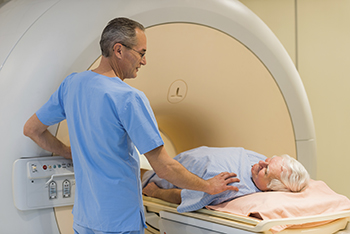Link to Source page: /health-information/diagnostic-tests/virtual-colonoscopy
Current page state: This syndication page is Published
Virtual Colonoscopy
On this page:
- What is virtual colonoscopy?
- Why do doctors use virtual colonoscopy?
- How do I prepare for a virtual colonoscopy?
- How do health care professionals perform a virtual colonoscopy?
- What should I expect after a virtual colonoscopy?
- What are the risks of a virtual colonoscopy?
- Seek care right away
What is virtual colonoscopy?
Virtual colonoscopy is a procedure in which a radiologist uses x-rays and a computer to create images of your rectum and colon from outside the body. Virtual colonoscopy can show ulcers, polyps, and cancer.
Does virtual colonoscopy have another name?
Virtual colonoscopy is also called computerized tomography (CT) colonography.
How is virtual colonoscopy different from colonoscopy?
Colonoscopy and virtual colonoscopy are different in several ways. Colonoscopy is a procedure in which a trained specialist uses a long, flexible, narrow tube with a light and tiny camera on one end, called a colonoscope or scope, to look inside your rectum and colon. Virtual colonoscopy is an x-ray test, takes less time, and does not require a doctor to insert a scope into the entire length of your colon. Unlike colonoscopy, virtual colonoscopy does not require sedation or anesthesia.
However, virtual colonoscopy may not be as effective as colonoscopy at finding certain polyps. Also, doctors cannot remove polyps or treat certain other problems during virtual colonoscopy, as they can during colonoscopy. Your health insurance coverage for virtual colonoscopy and colonoscopy also may be different.
Why do doctors use virtual colonoscopy?
Doctors mainly use virtual colonoscopy to screen for polyps or cancer. Screening may find diseases at an early stage, when a doctor has a better chance of curing the disease.
Occasionally, doctors may use virtual colonoscopy when colonoscopy is incomplete or not possible due to other medical reasons.
Screening for colon and rectal cancer
Your doctor will recommend screening for colon and rectal cancer at age 45 if you don’t have health problems or other factors that make you more likely to develop colon cancer.1
Factors that make you more likely to develop colorectal cancer include
- someone in your family has had polyps or cancer of the colon or rectum
- a personal history of inflammatory bowel disease, such as ulcerative colitis or Crohn’s disease
- other factors, such as if you weigh too much or smoke cigarettes
If you are more likely to develop colorectal cancer, your doctor may recommend screening at a younger age, and you may need to be tested more often.
If you are older than age 75, talk with your doctor about whether you should be screened. For more information, read the current colorectal cancer screening guidelines from the USPSTF.
Government health insurance plans, such as Medicare, and private health insurance plans sometimes change whether and how often they pay for cancer screening tests. Check with your insurance plan to find out if and how often your insurance will cover a screening virtual colonoscopy.
Visit the National Cancer Institute’s website to learn more about colon and rectal cancer.
How do I prepare for a virtual colonoscopy?
To prepare for a virtual colonoscopy, you will need to talk with your doctor, change your diet, clean out your bowel, and drink a special liquid called contrast medium. The contrast medium makes your rectum and colon easier to see in the x-rays.
Talk with your doctor
You should talk with your doctor about any medical conditions you have and all prescribed and over-the-counter medicines, vitamins, and supplements you take, including
- arthritis medicines
- aspirin or medicines that contain aspirin
- blood thinners
- diabetes medicines
- nonsteroidal anti-inflammatory drugs, such as ibuprofen or naproxen
- vitamins that contain iron or iron supplements
X-rays may interfere with personal medical devices. Tell your doctor if you have any implanted medical devices, such as a pacemaker.

Doctors don’t recommend x-rays for pregnant women because x-rays may harm the fetus. Tell your doctor if you are, or may be, pregnant. Your doctor may suggest a different procedure, such as a colonoscopy.
Change your diet and clean out your bowel
As in colonoscopy, a health care professional will give you written bowel prep instructions to follow at home before the procedure. A health care professional orders a bowel prep so that little or no stool is present in your intestine. A complete bowel prep lets you pass stool that is clear and liquid. Stool inside your colon can prevent the x-ray machine from taking clear images of the lining of your intestine.
You may need to follow a clear liquid diet the day before the procedure. The instructions will provide specific direction about when to start and stop the clear liquid diet. In most cases, you may drink or eat the following:
- fat-free bouillon or broth
- gelatin in flavors such as lemon, lime, or orange
- plain coffee or tea, without cream or milk
- sports drinks in such flavors as lemon, lime, or orange
- strained fruit juice, such as apple or white grape—doctors recommend avoiding orange juice and red or purple beverages
- water
Your doctor will tell you how long before the procedure you should have nothing by mouth.
A health care professional will ask you to follow the directions for a bowel prep before the procedure. The bowel prep will cause diarrhea, so you should stay close to a bathroom.
Different bowel preps may contain different combinations of laxatives—pills that you swallow or powders that you dissolve in water and other clear liquids, and enemas. Some people will need to drink a large amount, often a gallon, of liquid laxative over a scheduled amount of time—most often the night before the procedure.
You may find this part of the bowel prep difficult; however, completing the prep is very important. The images will not be clear if the prep is incomplete.
Drink contrast medium
The night before the procedure, you will drink a contrast medium. Contrast medium is visible on x-rays and can help your doctor tell the difference between stool and polyps.
How do health care professionals perform a virtual colonoscopy?
A specially trained x-ray technician performs a virtual colonoscopy at an outpatient center or a hospital. You do not need anesthesia.
For the procedure, you will lie on a table while the technician inserts a thin tube through your anus and into your rectum. The tube inflates your large intestine with air for a better view. The table slides into a tunnel-shaped device where the technician takes the x-ray images. The technician may ask you to hold your breath several times during the procedure to steady the images. The technician will ask you to turn over on your side or stomach so he or she can take different images of the large intestine. The procedure lasts about 10 to 15 minutes.

What should I expect after a virtual colonoscopy?
After a virtual colonoscopy, you can expect to
- feel cramping or bloating during the first hour after the test
- resume your regular activities right after the test
- return to a normal diet
After the test, a radiologist looks at the images to find any problems and sends a report to your doctor. If the radiologist finds problems, your doctor may perform a colonoscopy the same day or at a later time.
What are the risks of a virtual colonoscopy?
Inflating the colon with air has a small risk of perforating the lining of the large intestine. The doctor may need to treat perforation with surgery.
Reference
This content is provided as a service of the National Institute of Diabetes and Digestive and Kidney Diseases
(NIDDK), part of the National Institutes of Health. NIDDK translates and disseminates research findings to increase knowledge and understanding about health and disease among patients, health professionals, and the public. Content produced by NIDDK is carefully reviewed by NIDDK scientists and other experts.